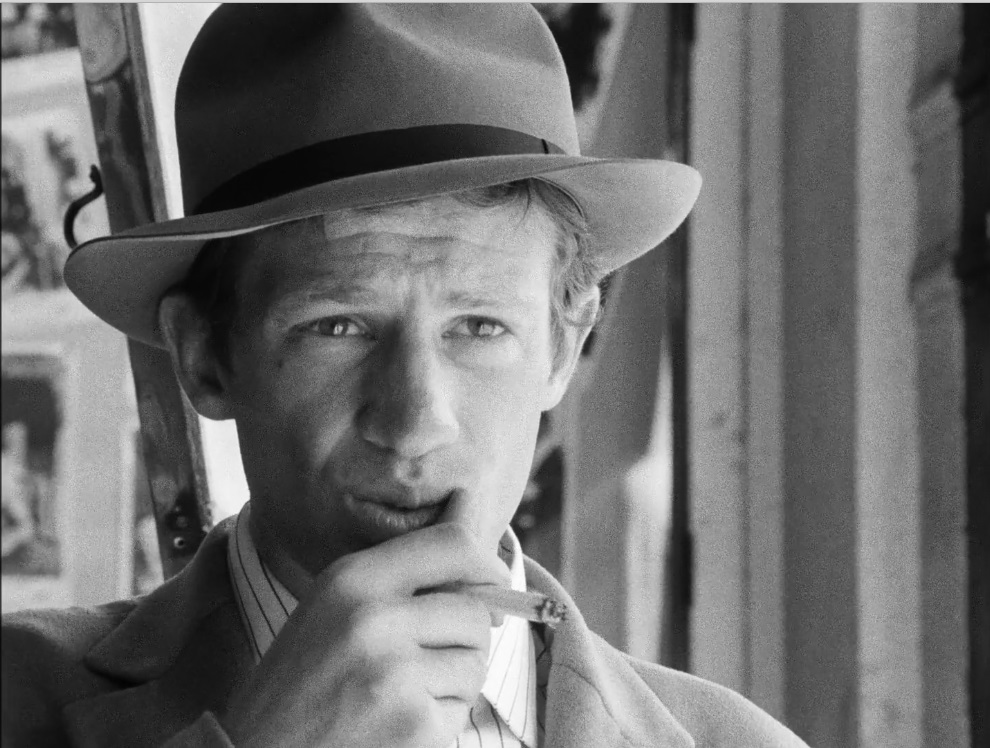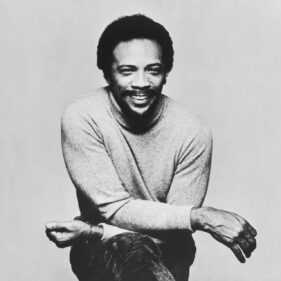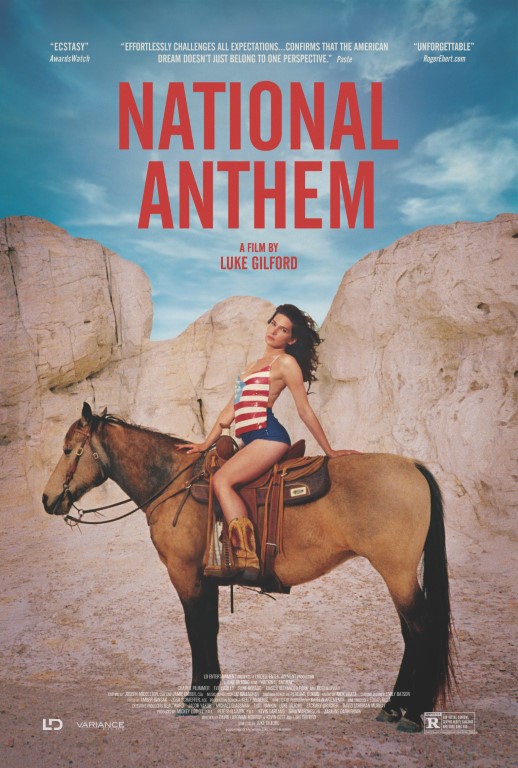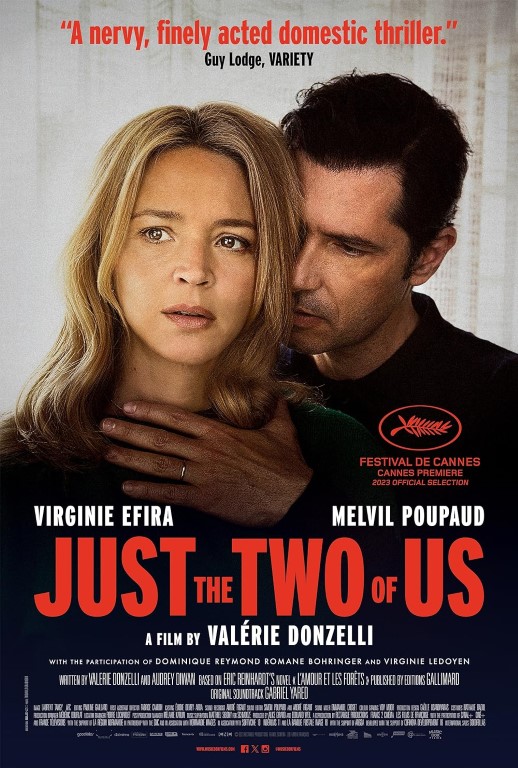When Film Forum ran a retrospective of Mikio Naruse films in 2005, there was a trailer for a 1960 Claude Sautet movie called "Classe Tous Risques" that ran before each rare Naruse showing, and every time I saw it played there was a stir in the audience, audibly female, whenever Jean-Paul Belmondo came on screen. I heard this cry of pleasure at the sight of Belmondo around 20 times; it never failed.
He looked both cute and tough, with the large busted nose of the boxer he had been above unusually thick and sensual lips. His manner could be physically rough, yet there was something so sweetly adrift about his hangdog eyes. Like Paul Newman, Belmondo was one of the first men who displayed some ab definition on screen when he took his shirt off, and this was particularly apparent in the long scene set at the Hotel de Suede that he shares with Jean Seberg in Jean-Luc Godard's "Breathless" (1960), the movie that made him a star.
Belmondo's father was Italian, and he lived a little west of Paris as a boy. He showed an aptitude for sports and engaged in a brief boxing career as a teenager, winning three straight first round knockout victories before doing his compulsory military service in Algeria. When he returned, Belmondo studied acting for several years at the Conservatoire of Dramatic Arts, and he was denied a prize there because he acted in a sketch that mocked the school, a rebellious gesture that got him some press attention.
Belmondo first started working for Godard in short films, and he made a brief appearance in Marcel Carné's juvenile delinquent picture "Les tricheurs" (1958). At one point in Claude Chabrol's "A Double Tour" (1959), Belmondo emerges from a room fully nude from behind in order to scandalize one of Chabrol's most scandal-izable bourgeois families, and in that movie both Belmondo and Bernadette Lafont are images of anarchy, sexually bold and happy to destroy any formality they happen to come across.

It was "Breathless" the following year that brought him fame. Belmondo's Michel stares with longing in "Breathless" at a poster of Humphrey Bogart, but he seems touchingly young in a way that Bogart never did; that famous moment when he stares at the Bogart poster and rubs his full lips with his thumb is a gesture of loss more than a gesture of emulation. No matter how tough he talks or how bluntly lustful he is with Patricia (Jean Seberg), Belmondo's Michel has a lost quality that seems to ask for help, and maybe that is what helped to put over Godard's more nihilistic impulses for "Breathless."
Belmondo later professed to be bored with his duties as leading man to Jeanne Moreau in the Marguerite Duras adaptation "Moderato Cantabile" (1960), and that was a signal to the French New Wave directors like Godard, Chabrol, and Francois Truffaut that their new male star was likely going to defect to more commercially oriented movies sooner rather than later. Yet Belmondo gives himself over to the solemn "Léon Morin, Priest" (1961) for Jean-Pierre Melville, putting himself into the long dialogue scenes with Emmanuelle Riva without any misgivings, and this was also a sign that his star power could be used for a serious film if you happened to catch his fancy.
The key to Belmondo's success in the 1960s is that everyone desired him for one reason or another, and he had the air of a guy who was quickly sick of any demands but also willing to show his best self if you really needed it. Philippe de Broca's "That Man from Rio" (1964) was a big commercial hit for him, but he returned to work with Godard the following year in "Pierrot le Fou," in which Belmondo played a man fed up with social lies and commercial exploitation who goes off to live with a girl (Anna Karina) in the spirit of just starting from scratch together. At one point in this movie, Belmondo does a loving imitation of the cantankerous French actor Michel Simon, the star of Jean Renoir's "Boudu Saved from Drowning" (1932) and Jean Vigo's "L'Atalante" (1934), making a case for rude adventure rather than the malaise involved in settling down.
After a somewhat anguished crime film for Louis Malle called "Le Voleur" (1967), Belmondo took a year and a half off. This was at the height of his movie career, and he was regularly getting offers to work in America, but it feels like Belmondo knew his limitations, and he also knew that a large part of his appeal was in his being thought of as elusive, someone who could not be pinned down. When he returned, Belmondo allowed himself to be bedeviled by Catherine Deneuve in "Mississippi Mermaid" (1969) for Francois Truffaut, and then he did a gangster picture called "Borsalino" (1970) with his closest rival, the deadly beautiful and far colder Alain Delon.
In the 1970s, Belmondo concentrated almost exclusively on commercial adventure vehicles, and he had serious relationships with some of the most attractive women in the world, including Ursula Andress and Laura Antonelli. He was the producer as well as the star of "Stavisky" (1974) for Alain Resnais, a rare venture into something more refined in this period, and a signal that he might still be drawn to movies where the primary interest wasn't just shooting off guns or jumping out of planes.
In 1987, he returned to the theater and played the actor Edmund Kean, and he also played Cyrano de Bergerac; both of these productions were filmed, and both of these efforts showed that there was a pleasing ham underneath Belmondo's cool image. In the 1990s, he acted in a re-imagined version of "Les Miserables" for Claude Lelouch and played again opposite Alain Delon in "Une chance sur deux" (1998). His hair went white, and his lined face and gleaming smile showed that he had been happy to get a tan during all those years as a sought-after movie star.
Belmondo had a stroke in the early 2000s, and he did not appear again until one final vehicle called "A Man and His Dog" in 2009. Being in such ill health for the last 20 years or so of his life could not have been easy, but his image on screen in Godard's "Breathless" is ever-fresh and youthfully alluring. No matter how badly his character behaves in this seminal movie, Belmondo cannot keep the kindness out of his eyes, or the hope for something better, and that quality should keep audiences sighing whenever they first see him as long as his great movies of the late 1950s and 1960s are shown.












